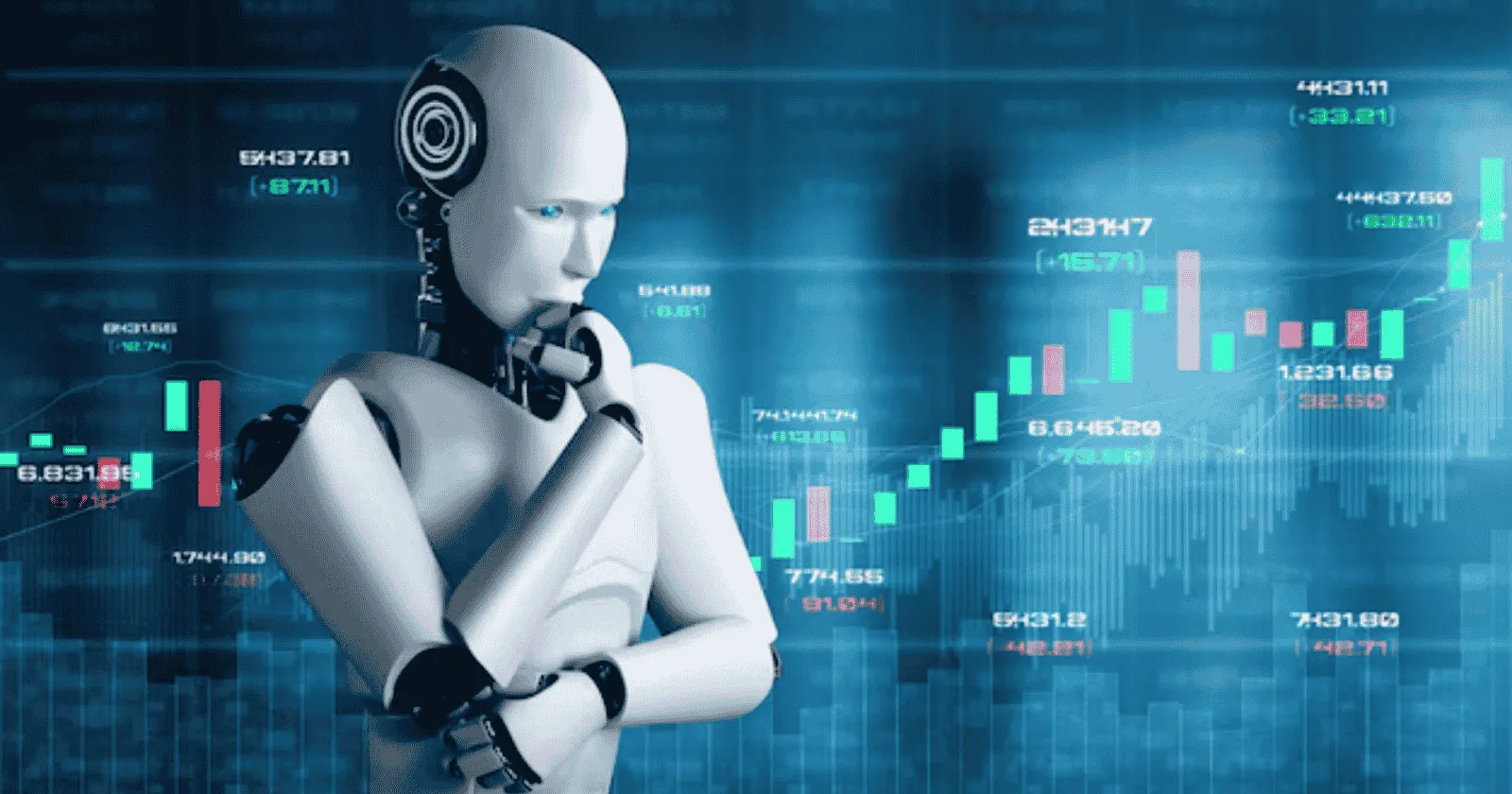AI for Real-Time Market Analysis: Tools & Trends (2025)
Feeling like you’re always a step behind fast-moving market shifts? In today’s volatile economy, relying on outdated data is risky; AI’s potential contribution to the global economy is estimated at $15.7 trillion by 2030, largely driven by enhanced productivity and insights.
TL;DR: AI revolutionizes real-time market analysis by processing vast data streams instantly, identifying patterns humans miss, and providing predictive insights. This article covers its benefits (speed, accuracy, prediction), challenges (data quality, bias, cost), top tools (Stock Titan, Trade Ideas, Incite AI), and how businesses can leverage it in 2025.
Table of Contents
What Is AI for Real-Time Market Analysis?
AI for real-time market analysis involves using artificial intelligence technologies, particularly machine learning and natural language processing, to continuously monitor, process, and interpret vast amounts of live market data from diverse sources. This includes stock prices, news feeds, social media sentiment, economic indicators, and company filings to identify trends, predict movements, and generate actionable insights as they happen.
Featured Snippet Answer: AI for real-time market analysis uses artificial intelligence to instantly process live data like stock prices, news, and social media sentiment. It identifies trends, predicts market movements, and offers actionable insights, enabling faster, more informed decisions for trading, finance, and business strategy.
Read also : AI for SEO: Using Perplexity & Claude to Build Topic Clusters
Why It Matters in 2025
Markets move faster than ever. Financial data, news cycles, and social media sentiment shift in seconds, significantly impacting asset prices and consumer behavior. For traders, financial institutions, and businesses making strategic decisions, access to real-time analysis is no longer just an edge – it’s becoming a necessity.
Here’s why AI is indispensable for real-time market analysis in 2025:
- Unmatched Speed & Volume: AI algorithms can ingest and analyze millions of data points from global sources simultaneously – news articles, financial reports, social posts, economic data releases – far exceeding human capacity.
- Pattern Recognition: AI excels at identifying subtle correlations and complex patterns across disparate datasets that humans might overlook, leading to earlier detection of potential trends or risks.
- Predictive Capabilities: By learning from historical data and identifying leading indicators in real-time streams, AI models can generate short-term market forecasts and assess risk with increasing accuracy [Source: Syracuse University iSchool].
- Sentiment Analysis: AI tools gauge market mood by analyzing the sentiment expressed in news headlines and social media chatter, providing a crucial layer of context beyond raw numbers.
- Algorithmic Trading & Automation: Real-time AI analysis fuels automated trading strategies, executing trades based on predefined criteria the instant market conditions are met.
Companies leveraging AI for real-time analysis are better equipped to capitalize on fleeting opportunities, mitigate risks proactively, and maintain a competitive advantage in dynamic markets [Source: Morgan Stanley].
Step-by-Step: Leveraging AI for Real-Time Analysis
While building a sophisticated AI analysis engine from scratch is complex, businesses and individuals can leverage existing tools and platforms. Here’s a general approach:
Step 1: Define Objectives & Data Needs
- What specific market insights are you seeking? (e.g., predict short-term stock movements, gauge consumer sentiment towards a product launch, identify emerging industry trends, detect market manipulation).
- What data sources are most relevant? (e.g., specific stock exchanges, news APIs, social media platforms, economic calendars, alternative data sources like satellite imagery or shipping manifests).
Step 2: Select AI Tools & Platforms
- All-in-One Platforms: Tools like Stock Titan, Trade Ideas, or Incite AI offer integrated real-time data feeds, AI analysis, scanning, and sometimes automated trading features.
- News & Sentiment Analysis Tools: Platforms focusing on analyzing text data from news and social media in real-time (e.g., Bloomberg Terminal – though expensive, specialized AI sentiment tools).
- API-Based Solutions: For custom needs, using APIs from financial data providers (e.g., Refinitiv, FactSet) combined with AI/ML platforms (Google Cloud AI, AWS SageMaker) allows building bespoke analysis systems.
- AI Investing Apps: Tools like those reviewed by U.S. News potentially offer AI-driven stock picks or analysis, though vetting is crucial.
Read also : Devin AI Autonomous Coding review
Step 3: Data Integration & Setup
- Connect your chosen data sources to the AI platform or tool. This often involves API keys or direct integrations provided by the platform.
- Configure the analysis parameters: Define the assets or topics to monitor, the types of signals to look for (e.g., unusual volume spikes, specific sentiment shifts, keyword mentions), and alert conditions.
Step 4: Real-Time Monitoring & Analysis
- Observe the AI-generated outputs: dashboards, alerts, sentiment scores, trend charts, predictive signals.
- Understand the AI’s methodology: How does the tool generate its insights? What are its limitations? Don’t blindly trust the output.
Step 5: Interpretation & Action
- Combine AI insights with human expertise and domain knowledge. AI provides speed and scale, but human judgment is vital for context and final decisions.
- Use the insights to inform actions: execute trades, adjust marketing strategies, allocate resources, manage risk exposure.
Step 6: Feedback & Refinement
- Evaluate the performance of the AI analysis. Were the predictions accurate? Were the alerts timely and relevant?
- Refine the system: Adjust data sources, tweak AI model parameters, modify alert thresholds, or even switch tools based on performance and evolving needs. This creates a crucial feedback loop for the analysis system itself.
Pros & Cons
| Aspect | Pros | Cons |
|---|---|---|
| Speed & Efficiency | Instant analysis of massive data streams, rapid identification of opportunities/threats. | High computational cost, requires robust infrastructure for true real-time performance. |
| Accuracy & Depth | Can detect complex patterns missed by humans, integrates diverse data types (text, numbers). | Susceptible to “noise” and false signals in volatile data, accuracy dependent on model quality and training data. |
| Predictive Power | Potential to forecast short-term movements and identify emerging trends earlier. | Predictions are probabilistic, not certain; prone to errors in unprecedented market conditions (“black swan” events). |
| Reduced Bias | Removes emotional decision-making often present in human analysis/trading. | Risk of inheriting biases present in historical training data or flawed model assumptions. |
| Automation | Enables automated trading strategies and real-time alerting. | Requires careful design and backtesting to avoid costly errors; “flash crashes” are a risk. |
Top AI Real-Time Analysis Tools (Examples)
- Stock Titan: Focuses on real-time news, SEC filings, AI insights, and scanning for US markets.
- Trade Ideas: Powerful AI stock scanner, backtesting, and automated trading platform (often cited by traders).
- Incite AI: Offers AI stock analysis, portfolio optimization, and market insights, with free tool availability mentioned.
- TrendSpider: Known for automated technical analysis, chart pattern recognition, and dynamic alerts.
- Bloomberg Terminal: The institutional standard, offering vast real-time data, news, and analytics (very high cost).
- Platforms like Perplexity or specific APIs: Can be used to build custom real-time monitoring solutions by integrating various data feeds.
Read also : Prompt Engineering for Financial Analysts: Expert Guide
How to Get Started
- Clarify Your Goal: What specific market question do you need answered in real-time?
- Identify Key Data: What 1-3 data streams are most critical for that goal? (e.g., specific stock prices, a major news feed, industry-specific social sentiment).
- Explore Focused Tools: Look for AI tools specializing in your data type (e.g., a stock scanner like Trade Ideas, a news sentiment tool). Many offer trials.
- Start Monitoring, Not Acting: Use the tool initially to observe the market and understand the AI’s output without making immediate decisions based on it.
- Validate Insights: Cross-reference AI alerts or predictions with your own analysis or other sources.
- Gradually Integrate: Only start incorporating AI insights into decision-making once you understand the tool’s strengths, weaknesses, and reliability for your specific use case.

Key Takeaways
- AI is transforming real-time market analysis by providing speed, depth, and predictive insights impossible for humans alone.
- It’s crucial for finance, trading, and strategic business decisions in fast-moving 2025 markets.
- Leveraging AI involves defining goals, selecting appropriate tools (platforms like Stock Titan, Trade Ideas, or custom builds), integrating data, and combining AI output with human judgment.
- Key challenges include data quality, potential biases, cost, and the need for careful validation.
- Start focused, validate thoroughly, and gradually integrate AI insights into your decision-making process
Author Bio
GPTGist (AI Strategist Team @ GPTGist) focuses on helping organizations leverage AI for growth and impact. Connect with us on LinkedIn.
Frequently Asked Questions (FAQ)
1. Can AI predict the stock market with 100% accuracy?
No. AI can significantly improve analysis speed and identify patterns, leading to potentially more accurate short-term predictions than humans alone, but markets are influenced by countless unpredictable factors (geopolitics, sudden events, complex human behavior). AI provides probabilistic insights, not certainty.
2. What’s the difference between real-time AI analysis and traditional technical analysis?
Traditional technical analysis relies on historical price/volume charts and established indicators, often interpreted manually. AI real-time analysis can incorporate technical indicators but also processes vast amounts of other live data (news, sentiment, economic data) simultaneously, identifies more complex patterns, and can generate predictive signals faster.
3. Do I need to be a data scientist to use AI for market analysis?
Not necessarily. Many platforms (like Stock Titan, Trade Ideas) are designed for traders and business users, offering pre-built AI insights and user-friendly interfaces. However, building custom AI analysis systems using APIs does require data science and programming skills.
4. What are the main risks of using AI for real-time market analysis?
Risks include: relying on flawed or biased data, overfitting models to past data (making them poor predictors of the future), misinterpreting AI output, technical glitches in automated systems, and the high cost/complexity of sophisticated setups. Human oversight and validation are crucial.
5. Can AI help analyze markets beyond stocks, like crypto or commodities?
Yes. The principles are similar. AI can analyze real-time price data, news feeds, social media sentiment (very important for crypto), on-chain data (for crypto), and relevant economic factors for commodities (e.g., weather patterns, supply chain news) using appropriately configured tools and data sources.
Read also :
Voice Cloning Ethics Legal Guide
De-Risking AI Adoption: Governance Check-list
AI Agent vs assistant difference





